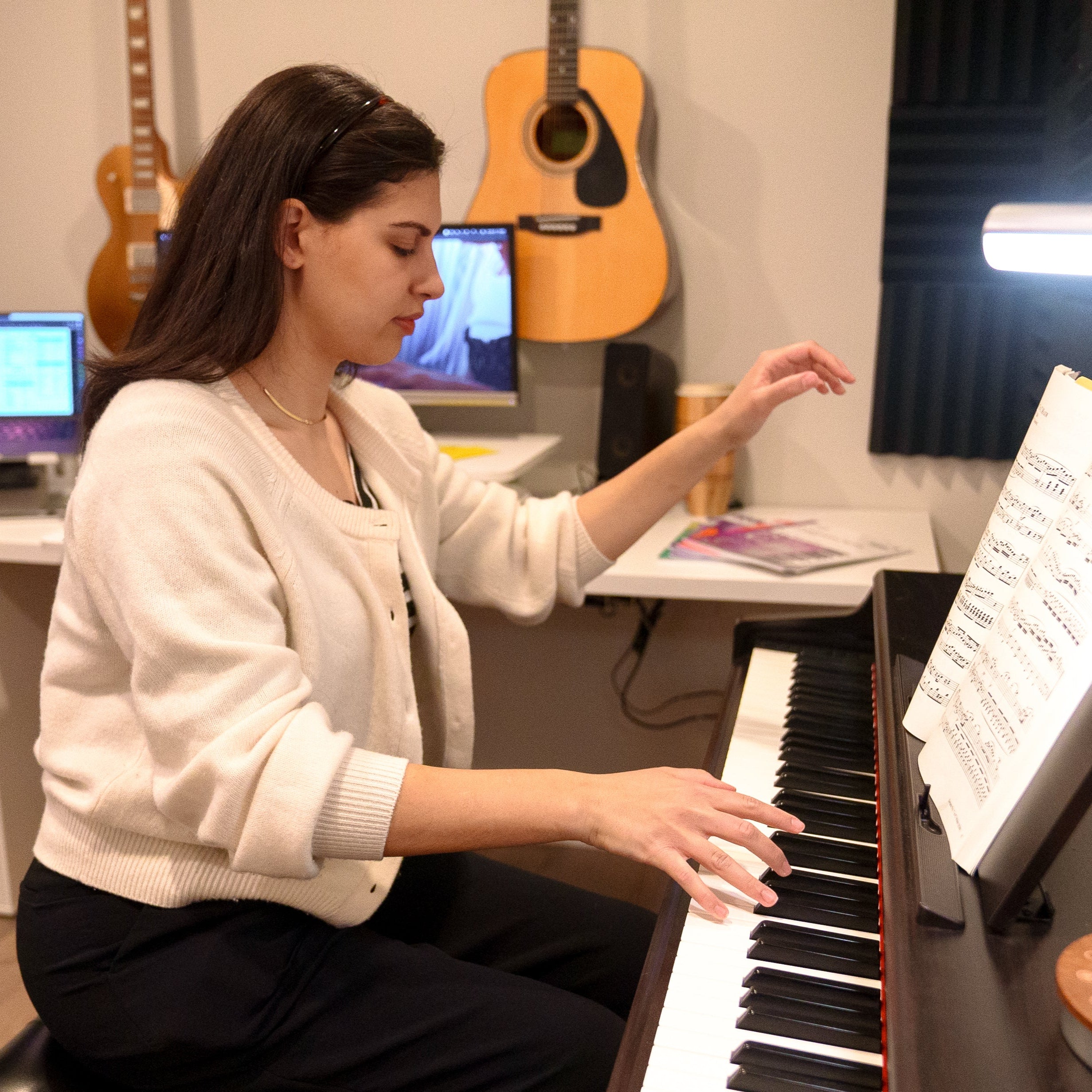
Emma Morales, Studio Director
Meet Your Teacher
I'm Emma, or as some students call me - Ms. Morales, Studio Director at The Modern Piano Room. I'm so glad you're here!
My musical journey began at the age of 9 as a young songwriter. Inspired by Avril Lavigne and my dad's classic rock collection, I would sit in my bedroom for hours, nose-deep in my lyric journal with a pen and MP3 player to capture voice recordings. Desperate to support my passion for songwriting, I begged my parents to put me in piano lessons. My parents quickly enrolled me in a before-school group program in our elementary school gym—and that's where my piano adventure began at the age of 10.
I've been playing piano for over 15 years, and though I was inspired by popular music, I underwent over 7 years of focused classical training with regular examinations that helped me become the skilled musician I am today. I find that one of the most interesting aspects of studying piano is the endless opportunity for growth. There is always something new to discover, whether it's a new technique, repertoire piece, or composition that's a product of creativity. The thrill of knowing that there are limitless possibilities on the piano is something I strive to share with my students.
My aim as a teacher is to guide students as they develop the skills and confidence they need to enjoy music throughout their lives. Whether they continue professionally, use music as a creative outlet, or play simply for personal enjoyment, I want them to leave each lesson with a deep appreciation for music as a whole.
Teaching Philosophy
I believe every child is inherently musical, and with the right guidance, their potential can flourish. My mission is to nurture that potential through joyful, research-informed teaching that puts people first. When students feel emotionally safe, intellectually challenged, and socially supported, musical excellence follows naturally.
I hold myself and my studio to high standards of pedagogy and professionalism. Whether a student is preparing for Royal Conservatory exams, playing in festivals, or simply sharing music at school, my goal is the same: to help them grow in confidence, creativity, and skill.
Thank you for believing in the power of music. I can’t wait to share this journey with your family.
My Teaching Priorities
To Offer Professional & Caring Instruction in a Safe, Supportive Studio
One of the biggest concerns for families is finding the right teacher. I take that responsibility seriously. I’m a trained educator, and all instructors I partner with for my in-school programs are qualified, background-checked, and child-centered in their approach. My studio is a warm, transparent, family-friendly space. Parents are always welcome to observe. I prioritize safety, trust, and positive teacher-student relationships because students thrive when they feel at home. Clear communication, flexible scheduling, and reliable service mean families and schools can count on me. When a principal refers a child to any one of my programs, they know that student will be in capable, caring hands.
To Introduce Music as a Tool for Whole-Child Development
Piano lessons are an opportunity to build focus, confidence, resilience, and creative thinking. My teaching supports each child’s growth across mind, body, and heart. Students learn how to listen, persist, solve problems, and express themselves. These benefits extend into school and life. Success is measured not only by musical progress, but by the joy and confidence students carry with them beyond the lesson.
To Nurture Strong Partnerships with Parents and Schools
Music education is a team effort. I work closely with parents to ensure that learning continues at home in a positive, stress-free way. I provide practical tools, progress updates, and tips that make home practice easier and more enjoyable.
I also collaborate with local schools to reinforce classroom learning and align with Ontario’s values of creativity, inclusion, and equity. My program complements—not competes with—school offerings, and I’m proud to support school partners through enrichment programs, flexible scheduling, and shared student goals. When a child sees that their parents, teacher, and school are all cheering them on, their confidence soars, and so does their love for music.
My Credentials
Each lesson I teach is supported by evidence-backed teaching strategies and techniques. My teaching is informed by the Royal Conservatory of Music, where I’ve completed the Elementary Piano Teaching Course with honours and distinction.
I am currently working toward the Associate of the Royal Conservatory of Toronto (ARCT) designation in both Piano Performance and Piano Pedagogy. This advanced training includes an in-depth study of performance, music theory, history, analysis, and evidence-backed teaching methods. As part of the accreditation process, I must also complete a series of practical performances, written assessments, and oral examinations to demonstrate both technical proficiency and a deep understanding of music.
ARCT, Piano Performance
This is one of the highest level of practical piano training offered by the Royal Conservatory of Music. It focuses on advanced technique, musical interpretation, and performance artistry, ensuring that I continue to refine my own skills at the highest level.
Expected Completion: 2028
ARCT, Piano Pedagogy
This program is specifically designed for highly trained piano educators. It includes in-depth studies of teaching methods, student psychology, repertoire selection, and effective strategies for guiding students from beginner to advanced levels.
Expected Completion: 2029
This ongoing training means that I bring both technical expertise and pedagogical knowledge into my lessons, ensuring that your child receives instruction rooted in proven teaching methods while also being inspired by a teacher who is continuously growing as both a performer and educator.

Inside the Piano Room
A carefully designed space with visual aids, acoustic panels, and technology all working together to support learning.
In my studio, every detail has been thoughtfully arranged to create a calm and engaging learning environment for children. From the books on the shelf to the acoustic panels on the walls, each component is chosen with purpose. I’d like to give you a tour of this “inside the piano room” experience, explaining how the materials, tools, and setup all support your child’s musical growth. Each feature in the room is backed by research on how kids learn best, making the space feel professional yet warm.
A Structured & Engaging Curriculum
Learning starts with a great curriculum. I use a blend of trusted piano method books to give students a solid musical foundation. Chief among these are the Royal Conservatory of Music (RCM) Celebration Series® and the Faber Piano Adventures (including the Primer level and Popular Selections). These books provide a structured, sequential approach to piano skills. In fact, the RCM curriculum is meticulously designed to cover theory, technique, and repertoire, offering students a well-rounded music education. Such a structured program ensures that fundamental skills (like note reading and technique) are introduced in a logical order and reinforced over time.
Alongside the core method books, I include supplementary pieces like fun songs from movies, folk tunes, or popular hits appropriate for beginners. This balance between classical curriculum and familiar tunes keeps lessons fresh and motivating. Research in music education supports this mix: studies have found a strong correlation between students’ motivation and their choice of repertoire.
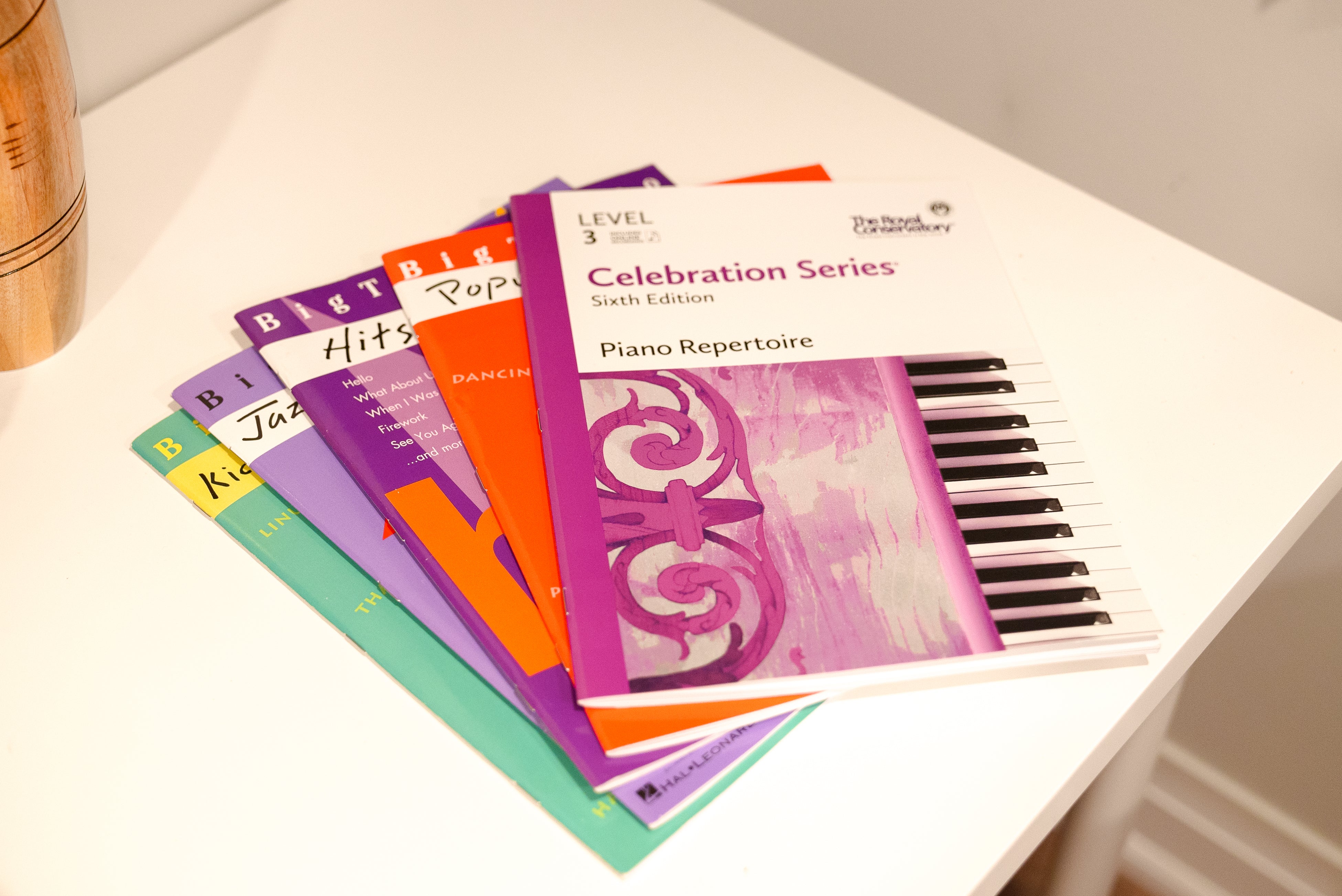
Interactive Teaching Tools for Active Learning
Children learn best by doing, so my piano room is equipped with interactive teaching aids that turn music theory and reading into hands-on activities. Instead of relying solely on verbal explanation, I use various tools to engage different learning styles and make abstract concepts concrete. Some of the key teaching aids you’ll find in my studio include:
- I use flashcards for quick, game-like drills on things like note names and rhythms. This is meant to leverage the science of spaced repetition. Educational research shows that regular, spaced-out practice is highly effective for long-term memory. By reviewing flashcards periodically, students steadily reinforce their knowledge (for example, identifying a treble clef note or a rhythm pattern) in a fun way. This approach helps important information stick, and kids love the challenge of beating their previous score or time.
- On one wall is a large dry-erase board where we frequently work through theory puzzles or creative projects. Research shows that writing by hand engages the brain in ways that boost learning and memory. Many kids find it fun to play teacher and write on the board themselves!
- On the dry erase board, I have colourful posters, such as a grand staff diagram and musical symbols charts. These visual aids serve as constant, gentle reinforcement of concepts we've covered. Many children are visual learners, and seeing musical concepts displayed can bolster their understanding. In fact, classroom research finds that visual supports help students understand and remember new information better. Even when I’m not actively pointing to the poster, its presence means the student’s eyes and brain are taking in musical knowledge. It makes the room feel like a mini music classroom, where learning surrounds us.
By using these teaching tools, I make sure each lesson appeals to multiple senses, like seeing, hearing, and touch. This multi-sensory approach keeps children active and focused. Instead of passively sitting through a lesson, your child gets to move objects, draw, and participate, which research suggests can lead to better retention and understanding of new musical concepts. All of these resources create a lively learning atmosphere where theory and reading become an interactive game rather than a chore.
Rhythm and Movement
Music is a physical experience, especially for children, so we try not to stay glued to the piano bench the entire lesson. Rhythm instruments and movement activities are a big part of how I teach timing and pulse. Young students naturally love to clap, tap, and move, and these actions have real pedagogical value. Research shows that children develop a sense of rhythm by moving their bodies and using simple instruments, not just by listening. In my studio, we might clap our hands to a steady beat, tap on a drum. These playful exercises help your child internalize the concept of a steady beat.
By the time we return to the piano keys, your child has felt the beat and is ready to apply it in their playing. This approach is very much in line with early-childhood music education methods that emphasize movement (like Dalcroze Eurhythmics and Kodály techniques). The result is that students develop a strong internal pulse and better rhythmic accuracy, all while having fun.
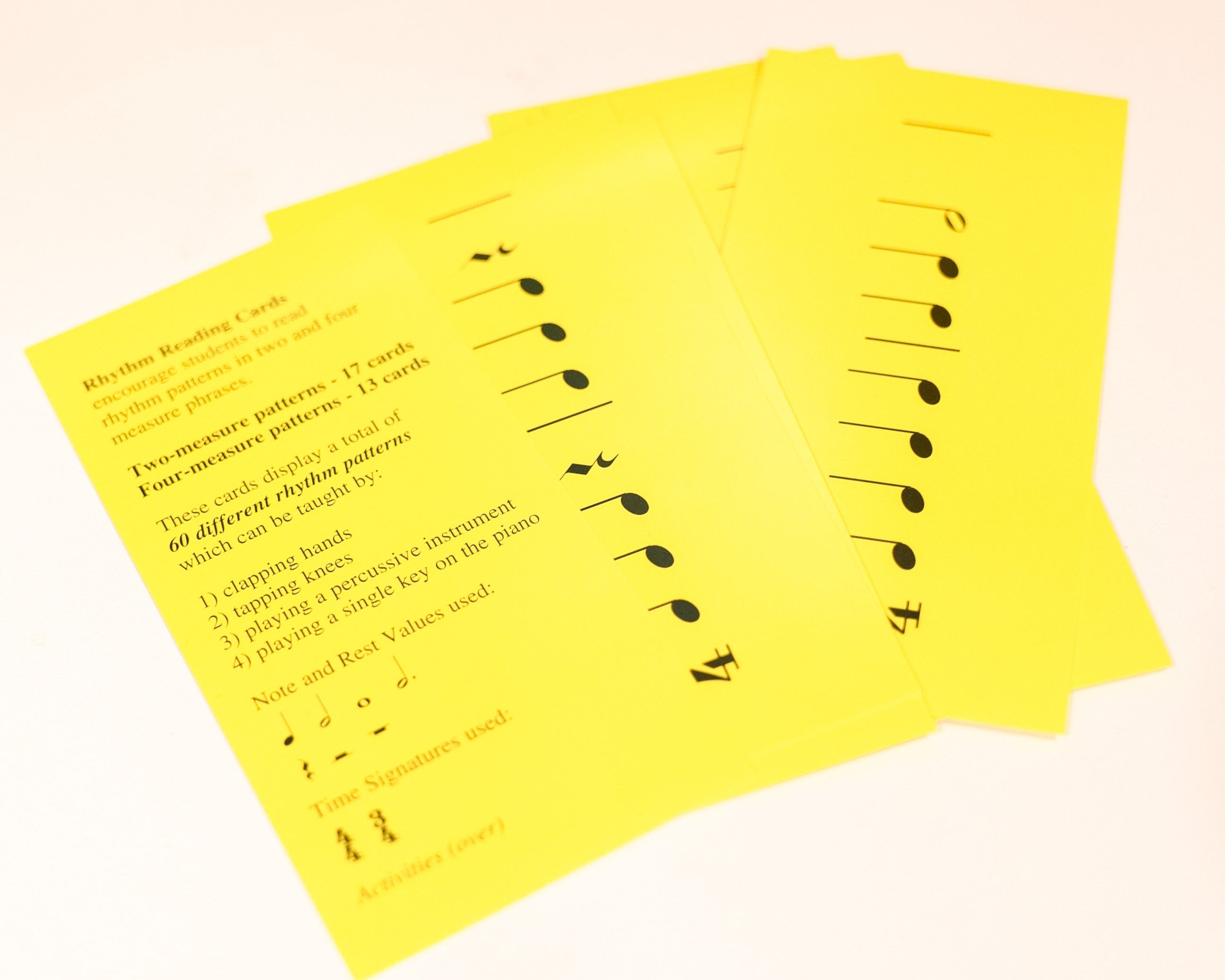
A Sound-Optimized Space
One thing you might notice in the studio is the presence of black acoustic panels on the walls. These foam panels are there to shape the sound of the room. A piano can be a loud instrument, and in a small space, hard surfaces could make the sound harsh or echoey. To ensure the environment is comfortable for young ears, I’ve installed acoustic treatment to absorb excess sound and reduce echoes. This means when your child is playing enthusiastically, the sound remains clear and pleasant, rather than overwhelming. Good room acoustics also help my voice remain clear when I’m giving instructions or singing along, so your child can hear me without straining.
The decision to add acoustic panels comes from evidence in classroom design. Research on learning spaces shows that suitable acoustical design enhances speech clarity and reduces background noise, which is crucial for effective communication. In a teaching studio, this translates to your child hearing the subtleties of music and instruction without distraction. Conversely, poor acoustics can create noise that disrupts focus and even affects behaviour. By taming the reverberation in the room, we avoid those issues.
For students who are sensitive to loud sounds or have attention difficulties, this kind of sound optimization can be especially helpful. Instead of feeling overwhelmed by the volume, they experience the piano’s tone at a gentle, ears-friendly level.
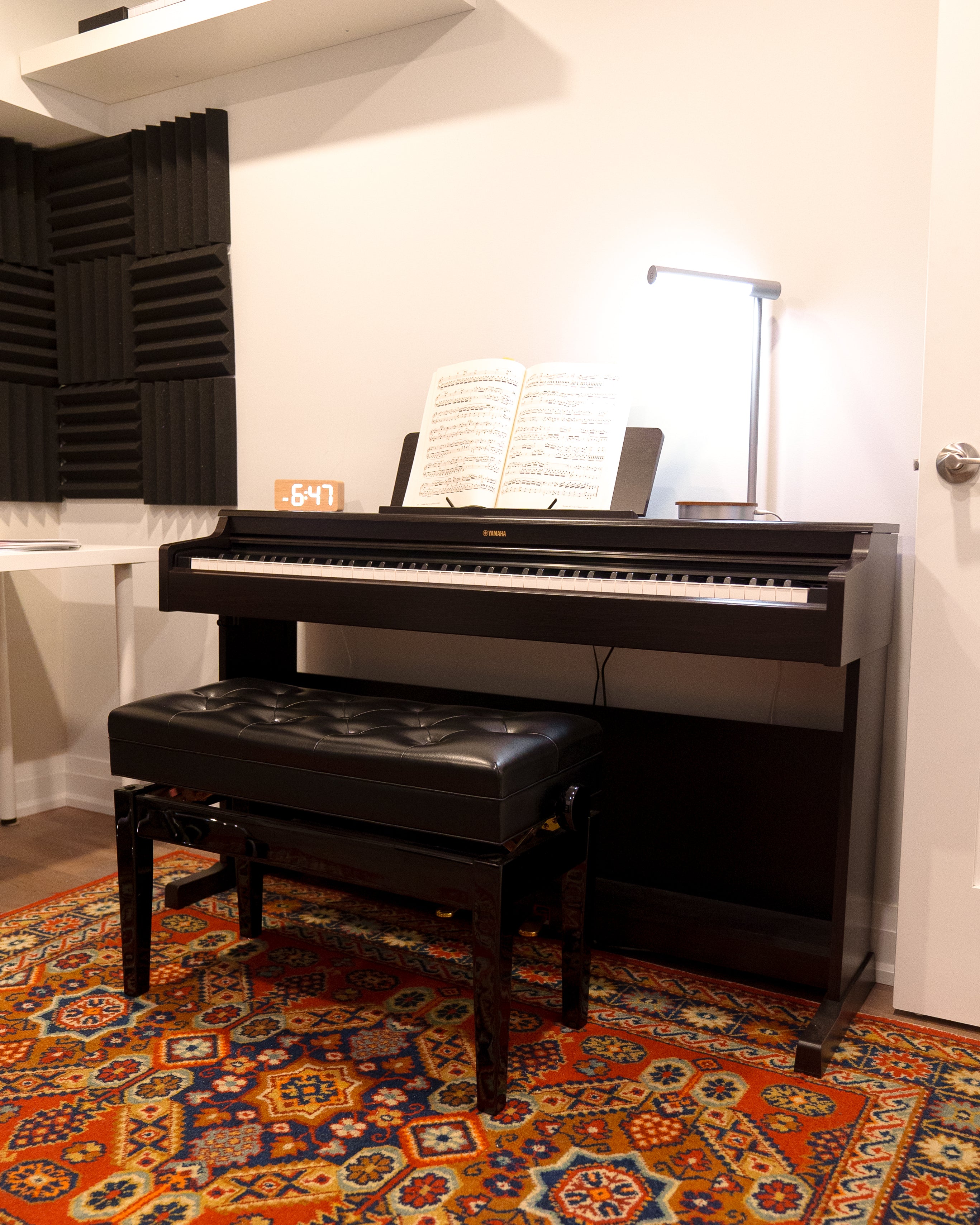
Technology-Enhanced Teaching
Modern tools have a place in the modern piano room. Alongside books and boards, my studio is set up with technology to enhance learning. You likely saw the large monitor, laptop, and microphone in the room. I sometimes record parts of a student’s lesson or performances (with permission) using a high-quality microphone. Later, we can listen to the recording together so the student can hear themselves and identify what they did well or what could improve. The most important benefit of recording your playing is that it greatly improves your listening skills. It allows a young pianist to step back and critically hear their music as an audience would. This kind of self-assessment is a powerful tool: children learn to evaluate their dynamics, articulation, and rhythm and become more aware musicians. Even a short video clip of their hand posture or a particular piece can be illuminating for them (and something proud to show Grandma!).
Another advantage of my tech setup is online lesson capability. While in-person lessons are the norm here, sometimes life happens. Thanks to the studio’s camera and audio setup, we can smoothly transition to a live online lesson when needed. I use a dedicated microphone and multiple camera angles (for example, one showing the keyboard) to make virtual lessons as clear as possible. This means your child’s learning never has to pause; the continuity of weekly lessons can be maintained right from your home if circumstances prevent coming in person. Studies during recent years have shown that online music education, while different, can be flexible, effective, and engaging when done right. I’ve invested in this capability so that we have the best of both worlds: a richly equipped physical studio and a high-quality virtual classroom as a backup.
In addition, I sometimes use the computer to augment in-person lessons. For example, pulling up an educational music game, a metronome app, or an audio track for a duet. The large screen can display fun music theory games or notation software, adding an interactive digital element to our sessions. All of this tech is used in moderation and always with a purpose: to enrich the lesson and adapt to each student’s needs.
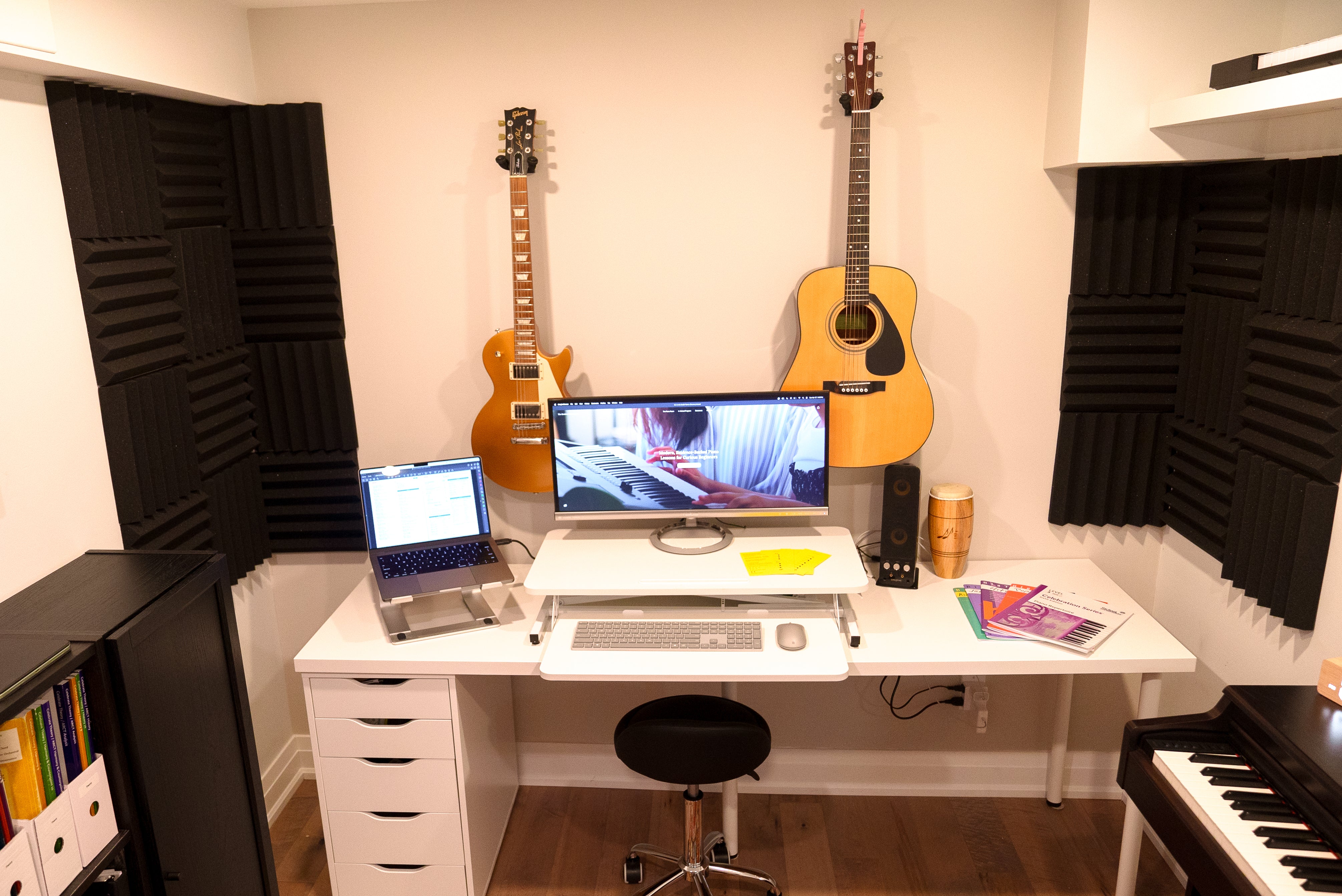
A Comfortable, Family-Friendly Waiting Area
While the lesson is underway, I want both students and their families to feel at ease. That’s why I’ve set up a comfortable waiting area just outside the piano room for parents or siblings. If you bring your child for a lesson, you can relax in a cozy chair in the waiting nook (complete with some reading material and Wi-Fi access), knowing you’re only a few steps away. This arrangement strikes a nice balance between giving the student focused one-on-one time and keeping you nearby. Many children take comfort in simply knowing a parent is close by, which can ease any nerves, especially in the first few lessons. At the same time, having a separate waiting space ensures that young pianists can concentrate without feeling self-conscious under a parent’s direct gaze.
I want siblings to have a place to quietly read or draw during brother or sister’s lesson, and I want parents to feel welcome to listen in (some parents enjoy hearing the music through the door and tracking progress). By providing a welcoming, child-friendly space for waiting, I hope to make the logistics of piano lessons easier on your family. Education research in other settings has noted that when children are in a kid-friendly waiting environment engaged in an activity, they tend to be happier and more open to the experience ahead. In our context, that means your child can transition into the lesson in a good mood, and you as a parent are less anxious as well. It’s a small detail, but it contributes to a positive routine around lessons – maybe your child even looks forward to arriving a few minutes early to colour a music worksheet in the waiting area before their lesson starts!
The entire waiting is designed with families in mind. Whether you choose to run a quick errand, or sit in the waiting area and quietly observe the lesson, the space is there to accommodate you.
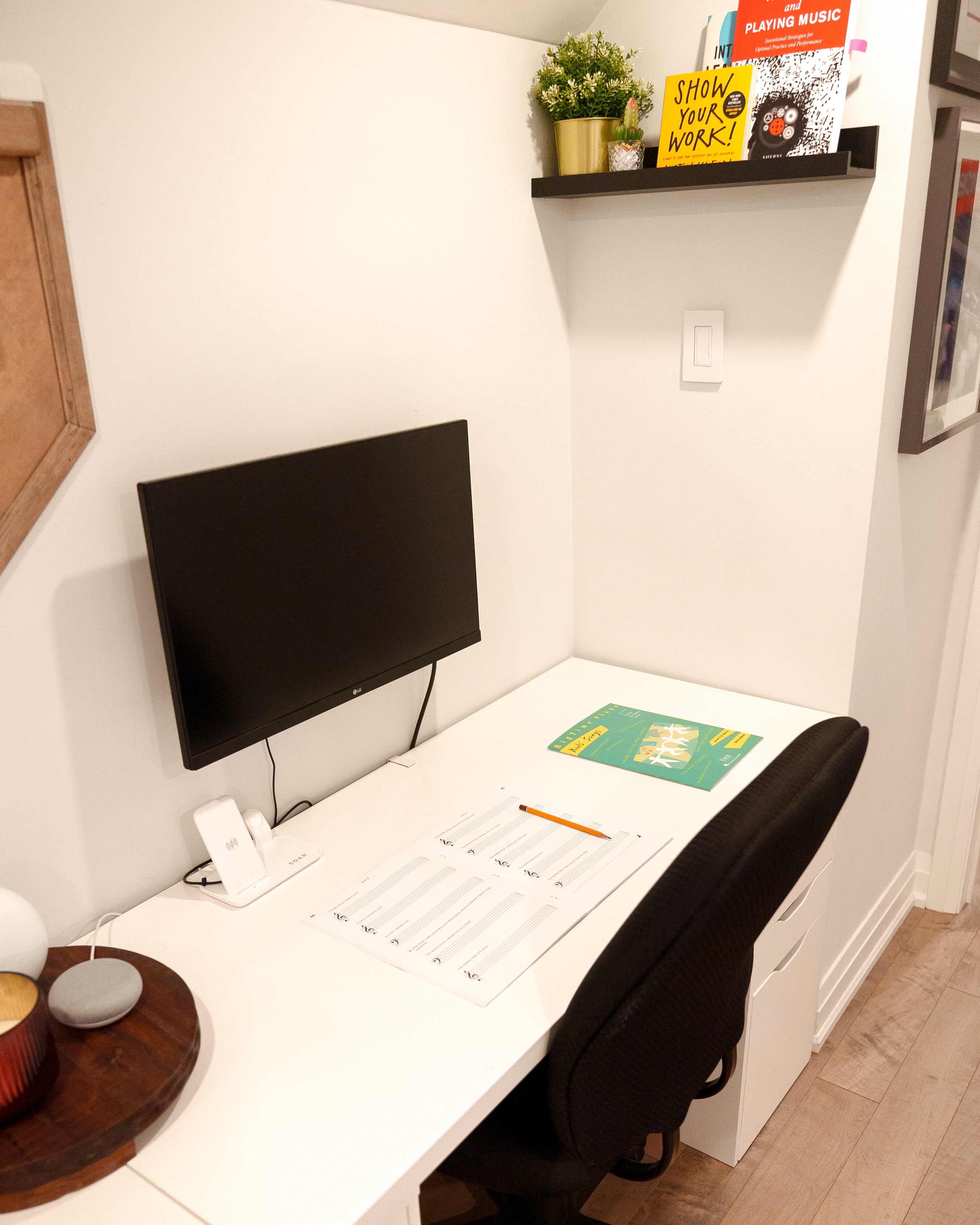
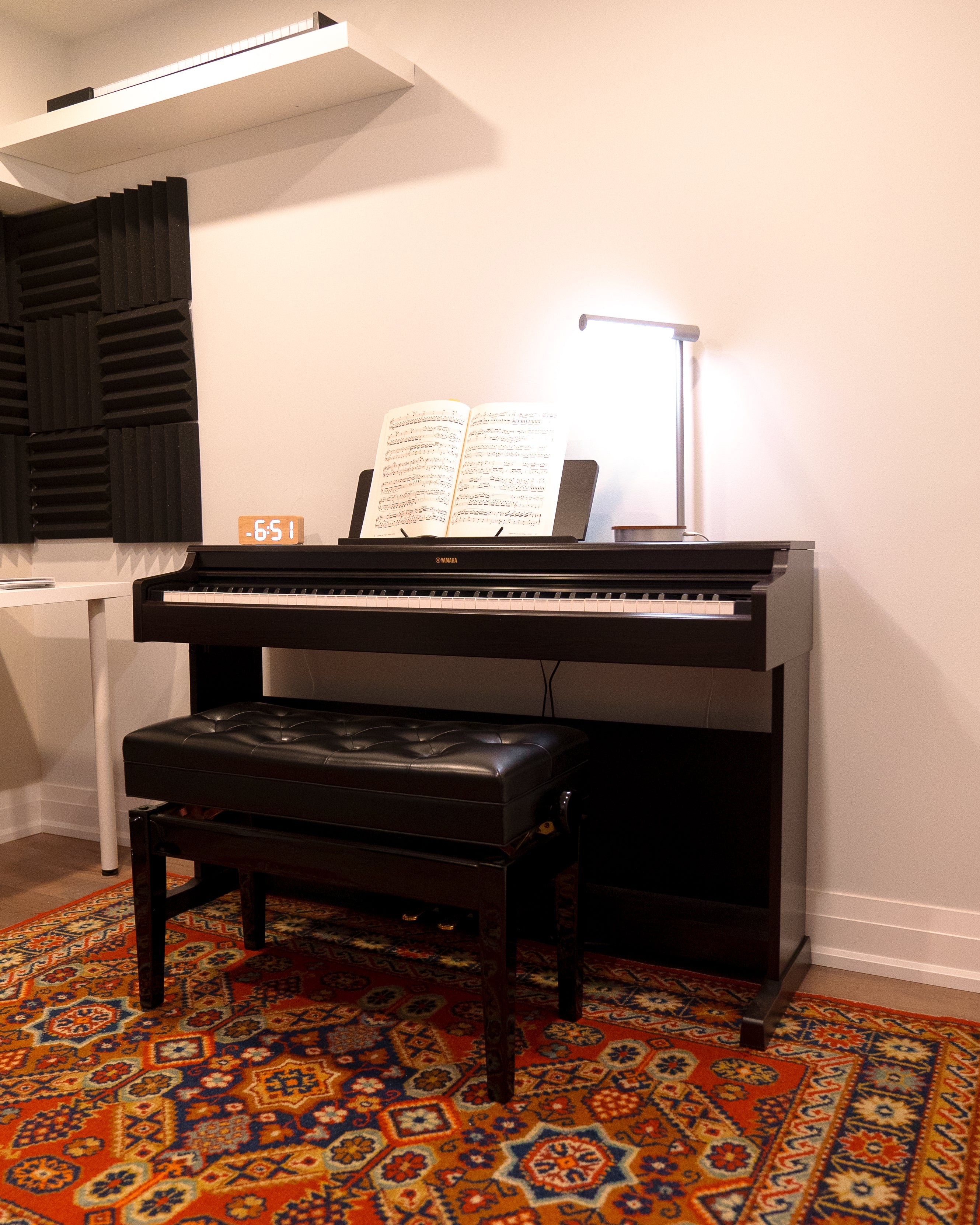
Experience the Piano Room for Yourself!
By now, you’ve gotten a detailed peek into how my piano room is organized for optimal learning and comfort. I warmly invite you to come and see the studio in person, or virtually, if you prefer. You are welcome to contact me or schedule a trial lesson to experience the Modern Piano Room firsthand. I’m always happy to chat about your child’s musical interests and answer any questions.
In my studio, learning piano is about building a lifelong love for music in an environment crafted for their success. I look forward to sharing this special space with you and your family, and to being a part of your child’s musical journey.

